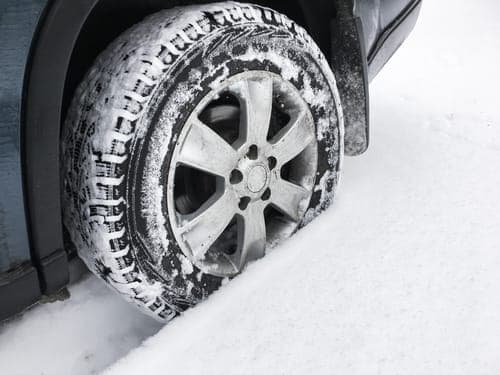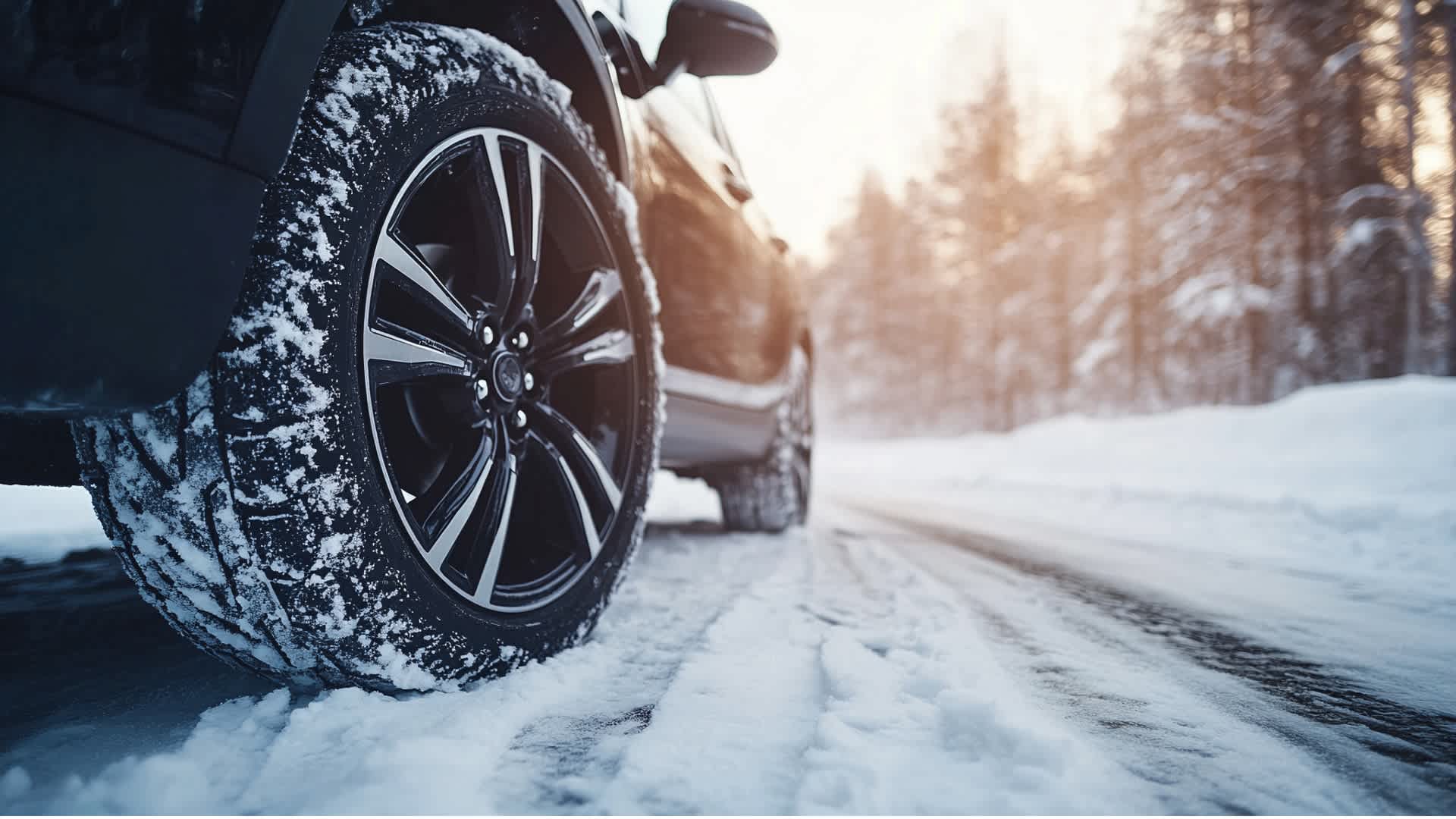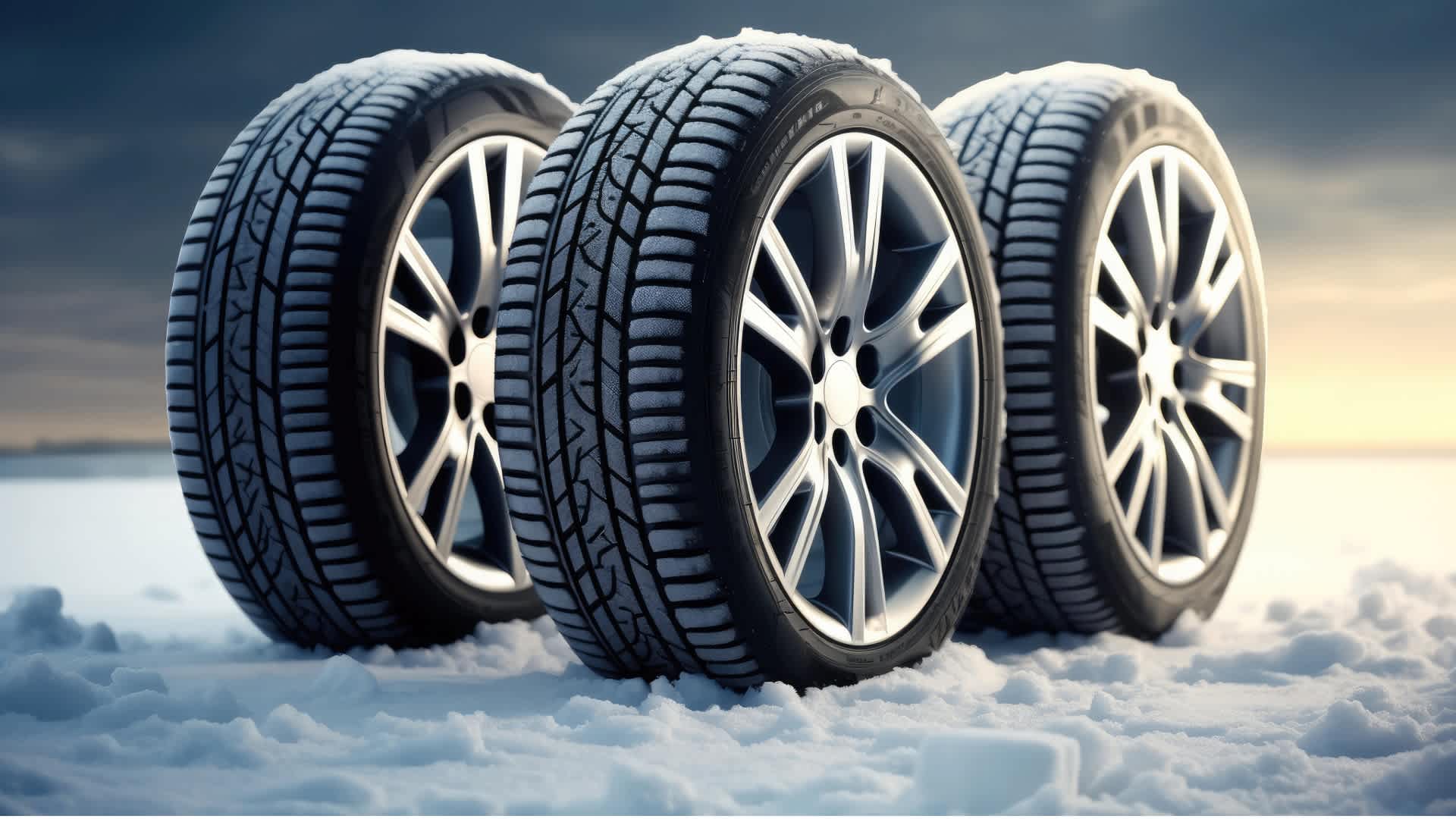Tire maintenance & safety
The truth about your vehicle’s rims and winter [+7 care tips]

Free shipping
Best price guarantee
Special pricing
Financing with Resolve
Easy returns
Tire maintenance & safety


Winter weather creates some of the harshest conditions your vehicle's rims will ever face. Road salt, freezing temperatures, and hidden potholes combine to create a perfect storm of challenges that can damage both steel and aluminum wheels.
Many drivers focus entirely on winter tires while overlooking the critical role that rims play in cold-weather performance. The metal structures that hold your tires respond differently to temperature changes, and understanding these differences can save you from costly repairs and dangerous driving situations.
Your choice between steel and alloy rims affects everything from tire pressure stability to long-term durability. Each type offers distinct advantages and drawbacks that become especially apparent when temperatures drop below freezing and road crews start spreading corrosive salt mixtures.
Rims serve as the foundation for your entire wheel assembly: they're the metal structures that physically hold your tires in place and maintain the critical air seal that keeps them inflated. Most vehicles use either steel or alloy (aluminum) rims, and each material behaves uniquely when exposed to winter's harsh conditions.
Steel rims consist of stamped or welded steel components that prioritize durability and cost-effectiveness over aesthetics. These workhorses of the rim world typically weigh more than their alloy counterparts but offer superior resistance to impact damage from potholes and curbs hidden beneath snow. Alloy rims combine aluminum with other metals to create lighter, more stylish wheels that improve handling and fuel economy, but this sophisticated engineering comes with trade-offs in cold-weather performance.
Cold temperatures trigger a fundamental change in metal behavior: contraction. This physical phenomenon affects every rim on the road, but aluminum contracts significantly more than steel when temperatures plummet. The greater contraction rate of alloy rims can compromise the critical seal between the tire bead and rim edge, leading to slow air leaks that many drivers don't notice until they're dealing with a dangerously underinflated tire.
Road salt presents another formidable challenge that extends beyond simple surface corrosion. Modern deicing compounds combine sodium chloride with calcium chloride, magnesium chloride, and other chemicals that aggressively attack both painted and bare metal surfaces. These corrosive agents work their way into microscopic imperfections in protective coatings, establishing rust colonies that expand with each freeze-thaw cycle.
Temperature fluctuations create additional stress through repeated expansion and contraction cycles. A rim that experiences 40-degree temperature swings between day and night endures mechanical stress equivalent to thousands of tiny hammer blows. Ice formation in wheel barrels adds rotational imbalance that strains suspension components, while packed snow increases unsprung weight and affects handling dynamics. These combined forces test rim integrity throughout the winter months, making material selection and maintenance practices crucial for safe winter driving.
Winter brings a unique set of challenges for rims, particularly those fashioned from aluminum. Cold temperatures cause aluminum rims to shrink more than steel rims, potentially affecting the seal where the tire meets the rim. This can lead to slight air leaks, causing fluctuations in tire pressure. Such fluctuations can impact vehicle handling and stability, necessitating vigilant tire pressure checks during cold spells. Over time, the repeated expansion and contraction cycles due to temperature changes can subtly degrade the integrity of the rims.
The use of road salt during winter is essential for safety but poses a significant threat to rim health. Salt combined with moisture can lead to aggressive corrosion, affecting both steel and alloy rims. Chrome finishes and painted surfaces are especially at risk, as salt can infiltrate even minute scratches or chips, accelerating rust development. Regularly cleaning and applying protective coatings can help guard against this corrosive assault, safeguarding your rims from the harsh elements of winter.
Winter conditions pose several physical challenges to rims. Snow can obscure potholes, leading to unexpected impacts that may damage rims. Ice accumulation inside wheel barrels can disrupt wheel balance, resulting in an uneven ride and potential tire wear. Continuous freezing and thawing cycles can compromise the structural integrity of rims, making them more susceptible to damage. Additionally, the weight of snow accumulation adds stress, underscoring the importance of routine rim checks and maintenance throughout the winter months.
Steel and alloy rims each present unique advantages and challenges when faced with winter's harsh demands. Understanding these differences can help you make an informed decision that aligns with your winter driving needs.
Steel rims excel in winter environments thanks to their robustness and reliability. They resist bending and cracking under the pressure of hidden winter hazards, such as covered potholes. Their construction allows them to maintain consistent tire pressure, promoting safer driving on icy roads. Furthermore, these rims offer a budget-friendly solution for those looking to minimize expenses without compromising performance.
Despite their sturdiness, steel rims have limitations. Their extra weight can hinder vehicle agility, potentially affecting handling in slippery conditions. Exposure to road salt can lead to rust and corrosion, impacting their longevity and appearance. While practical, steel rims often lack the visual appeal and variety that some drivers seek.
Alloy rims bring a blend of style and performance to the winter driving experience. Their lightweight nature enhances vehicle responsiveness, providing a more agile ride. Known for dissipating heat efficiently, they aid in maintaining brake performance, which is crucial when navigating winter roads. Additionally, these rims offer a diverse range of styles, catering to those who prioritize aesthetics alongside functionality.
The sophistication of alloy rims comes with certain drawbacks. Their susceptibility to temperature changes can compromise the seal between the tire and rim, occasionally leading to pressure inconsistencies. Repair and replacement costs for alloy rims are typically higher, reflecting their complex design. Although their finish may disguise initial salt damage, vigilant maintenance remains essential to prevent underlying issues.

Proper rim care during winter months involves a structured approach to combating the challenges posed by cold weather and road conditions. By employing a strategic maintenance routine, drivers can safeguard their rims, ensuring both performance and durability throughout the harshest season.
Keeping rims clean is vital for preventing winter-related damage. Make it a habit to wash your rims weekly, focusing on the removal of grime and debris that can accumulate and cause issues. Opt for wheel cleaners specifically formulated for automotive use, avoiding harsh chemicals that can damage the finish. After cleaning, ensure rims are completely dry to prevent any moisture from freezing on the surface. This routine not only maintains the aesthetic appeal of your rims but also supports their structural integrity.
Applying coatings provides a crucial barrier against winter's harsh conditions. Before winter begins, consider applying a durable protective coating designed to resist the effects of moisture and debris. Regularly reapply temporary wax or sealant products, especially following exposure to particularly challenging conditions. Pay extra attention to areas more prone to damage, such as the edges and any nicks or scratches. These protective measures help defend against the wear and tear that winter can impose.
Regular checks are essential for identifying and addressing potential rim issues early. Inspect your rims for any signs of surface damage or irregularities that may appear over time. Keep an eye on tire pressure, as cold temperatures can lead to unexpected changes that affect overall vehicle handling. After driving on rough winter roads, look for any signs of distress on your rims, such as dents or bends. By staying vigilant, you can prevent minor problems from developing into significant issues, ensuring your rims remain reliable throughout the winter season.
Choosing the right rims to pair with winter tires is key to ensuring safe and effective driving in cold weather. Aligning the rim width with tire specifications guarantees that the tires maintain the best possible grip on icy or snowy roads. A narrower rim can enhance snow traction by allowing the tire to slice through snow more efficiently, improving overall vehicle control. Ensuring the tire bead seats properly on the rim is crucial; this secure fit prevents air leaks and maintains consistent tire pressure, which is essential for reliable handling.
Tire pressure management becomes even more critical during winter months. Cold weather naturally reduces tire pressure, so frequent checks are necessary to maintain the ideal levels. Avoid the misconception that underinflating tires will improve traction; in fact, it can lead to reduced road contact and potential rim damage. Keeping tires properly inflated ensures they perform as intended, providing the best balance of grip, stability, and wear over their lifespan.
Winter driving often involves carrying additional weight, whether from passengers, luggage, or snow accumulation. It's vital to ensure your rims can accommodate these increased load requirements without compromising their integrity. For vehicles like trucks that regularly carry heavy loads, choosing rims designed for higher weight capacities can ensure durability and performance. This consideration helps maintain vehicle safety and efficiency, even under the stress of extra winter weight.
For drivers seeking cost-effective solutions, basic steel rims offer a straightforward choice for winter, known for their straightforward construction and reliability. Their rugged nature makes them suitable for enduring the rigors of winter roads without incurring high costs. Alternatively, used OEM alloy rims present a smart option for those who desire the benefits of alloy construction without the price tag of new rims. Committing to a specialized set of winter rims not only protects your everyday set from seasonal wear but also optimizes your vehicle's performance in adverse conditions.
Rim selection plays a pivotal role in how a vehicle handles winter driving conditions. The weight and design of rims can influence acceleration and braking, with lighter rims providing a more responsive driving experience crucial for icy roads. Selecting rims with the appropriate width is essential, as narrower rims may improve traction by allowing tires to cut through snow more effectively. Ensuring that the rims are compatible with your vehicle’s specifications is vital for maintaining optimal performance, fuel efficiency, and safety during harsh winter months.
Choosing winter rims involves balancing aesthetic appeal with practical needs. Steel rims, often paired with hubcaps, offer a protective layer against winter grime while maintaining a simple appearance. Alloy rims, while stylish and modern, require diligent maintenance to resist the corrosive effects of winter. When selecting rims, consider how they will look after enduring salt exposure and prioritize their ability to withstand the challenges of winter. In climates where conditions are extreme, focusing on functionality over form ensures that your rims can handle the demands of the season effectively.
When transitioning between seasons, proper storage is key to preserving your rims. Ensure summer rims are kept in a dry, climate-controlled space to mitigate moisture damage. Prior to storage, give each rim a thorough cleaning to eliminate any residues that might deteriorate the finish over time. Applying a protective layer before storing adds an essential shield against rust and oxidation, safeguarding your rims against the elements. To further protect from dust and scratches, consider using specialized tire or rim covers—these barriers ensure your rims remain in excellent condition while not in use.
Enlisting professional services provides a level of expertise that enhances the longevity of your rims. An annual professional inspection can detect any signs of wear or damage early, allowing for timely interventions. Powder coating offers a durable protective finish that prevents chips and resists corrosion, maintaining the rims' appearance and strength. For minor damage, professional repair services can restore your rims effectively without the need for full replacements. Proper mounting techniques, executed by professionals, ensure the bead area remains intact, which is crucial for maintaining tire pressure and preventing air leaks.
For those who prefer tackling rim care personally, several DIY strategies can bolster protection against winter's harsh conditions. Regularly applying wax to your rims can serve as a temporary protective shield, repelling water and road salt. Small rust spots can be addressed with touch-up paint, halting the spread of corrosion and preserving the rim's aesthetic and structural integrity. Bead sealant application ensures a secure fit between the tire and rim, crucial for maintaining optimal air pressure. By focusing on preparation and regular maintenance, these DIY methods empower you to actively protect your rims throughout the challenging winter months.
Winter rim care requires attention to detail and regular maintenance, but the effort you invest today protects your vehicle's performance and your wallet tomorrow. By understanding how different rim materials respond to cold weather and implementing proper care strategies, you can confidently navigate winter roads while preserving your investment.
Ready to ensure your vehicle is equipped for winter driving? We can help you shop for tires online and find the best deals that match your specific rim type and winter driving needs.
Search By